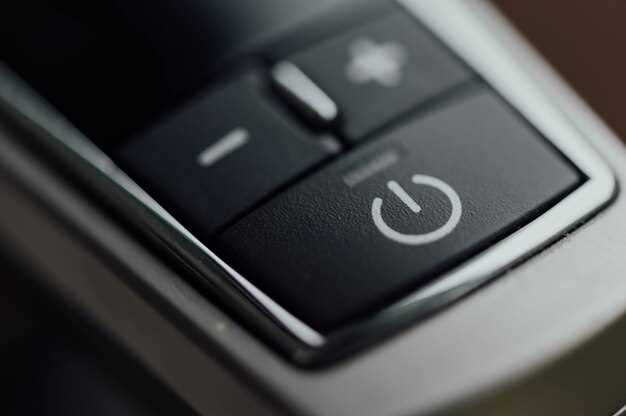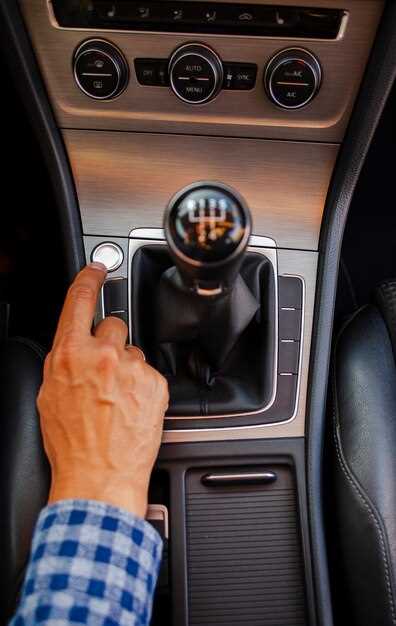
The turn signal system in your VW Corrado is crucial for safe driving, allowing you to communicate your intentions to other drivers. When the signal light fails to operate correctly, the primary suspect is often the turn signal relay unit. This small but essential component controls the flashing of your turn signals, ensuring they activate at the right moment.
The flasher unit may experience issues due to age, wear, or electrical malfunctions. Identifying the problem is not as daunting as it may seem. By following a few straightforward steps, you can troubleshoot and replace the relay, restoring functionality to your turn signals. This guide aims to provide you with clear instructions on how to diagnose and fix the turn signal relay on your VW Corrado.
Before diving into the repair process, it’s essential to understand how the signal system works. The turn signal relies on a properly functioning relay unit to create the rhythmic flashing that signals other drivers. In this article, we will explore the common symptoms of a faulty relay, how to access and test the relay unit, and ultimately how to replace it if necessary. With the right tools and a little patience, you can get your turn signals flashing correctly once again.
Identifying the Turn Signal Relay Location in VW Corrado
To effectively address issues with the turn signals in your VW Corrado, locating the turn signal relay unit is crucial. The relay is typically housed within the vehicle’s fuse box, which is located in the driver’s side footwell area. Begin by entering the car and looking beneath the dashboard, just above the pedals.
You will see a plastic cover that protects the fuse box. Carefully remove this cover by unclipping it; you may need a flathead screwdriver to assist in prying it open. Once exposed, you will find a diagram on the inside of the cover that illustrates the layout of the fuses and relays, including the specific location of the turn signal relay.
The turn signal relay unit is usually a small rectangular box that may vary in color and size depending on the model year. Once you have identified the correct relay, check for any visible signs of corrosion or damage that could affect its performance.
If you are unsure, you can also refer to the vehicle’s service manual, which provides detailed information on the relay locations and specifications, ensuring you have the correct information for your repairs.
Symptoms of a Faulty Turn Signal Relay
Identifying issues with the turn signal relay in your VW Corrado is crucial for maintaining safety on the road. A malfunctioning unit can lead to several noticeable symptoms that indicate it may need replacement.
- Intermittent Blinking: The turn signals may flash irregularly, either becoming faster or slowing down unexpectedly. This inconsistency often points to a failing flasher relay.
- Complete Failure: In some cases, the turn signals may stop working altogether. When you activate the turn signals, there may be no response from the unit.
- No Sound: A typical turn signal relay emits a clicking sound when activated. If this sound is absent, it may suggest that the relay is defective.
- Simultaneous Activation: If the left and right turn signals activate simultaneously instead of independently, it is a clear sign that the turn signal relay might be faulty.
- Dim or Flickering Lights: If the turn signal lights appear dim or flicker erratically when activated, the issue often lies within the relay functioning or connections.
Monitoring these symptoms can help you determine if it’s time to inspect and possibly replace the turn signal relay in your vehicle. Ignoring these signs could lead to further complications and safety hazards on the road.
How to Test the Turn Signal Relay with a Multimeter

Testing the turn signal relay, often referred to as the flasher unit, is an essential step in troubleshooting signal issues in your VW Corrado. A multimeter can help identify problems like poor connections or a defective unit. Follow these steps to perform the test effectively.
Firstly, ensure that your vehicle is parked and the ignition is turned off. Locate the turn signal relay under the dashboard or in the fuse box. Remove the relay from its socket gently.
Next, set your multimeter to the continuity setting or the resistance (ohm) setting. You will be checking for continuity, which will indicate whether the flasher unit is functioning correctly.
Using the multimeter, follow these connections:
| Multimeter Probe | Relay Terminal |
|---|---|
| Positive (+) | Terminal 30 |
| Negative (-) | Terminal 87 |
If the multimeter beeps or shows a low resistance reading, it indicates continuity, meaning the flasher is operational. If not, you may have a faulty unit.
As an additional test, reconnect the relay and turn on the ignition. Activate the turn signals and measure voltage at the input terminal (typically Terminal 15). A reading of 12 volts indicates that the electrical system is functioning correctly.
If the voltage is absent, the issue may lie within the wiring or the switch. If voltage is present and no clicking sound is heard from the flasher, the unit is likely defective and should be replaced.
In summary, using a multimeter to test the turn signal relay is a straightforward process that can save time and effort in diagnostics. Ensure proper connections and follow safety precautions throughout your testing.
Step-by-Step Replacement of Turn Signal Relay
Start by ensuring the vehicle is parked on a flat surface and the ignition is turned off. Locate the fuse box, usually found under the dashboard or in the engine compartment, depending on your VW Corrado model.
Once the fuse box is accessible, remove the cover to expose the fuses and relays. Identify the turn signal flasher unit; it may be labeled or you may refer to the vehicle’s manual for specific location details.
With the proper unit identified, gently pull it out from its socket. It may require a bit of wiggling to free it without damaging surrounding components.
Take the new turn signal relay and insert it into the correct slot. Ensure it is seated firmly and securely in place, making good contact with the electrical connections.
After installation, replace the fuse box cover. Turn the ignition on and test the turn signals to verify that the new flasher unit is functioning properly.
If the signals operate correctly, you have successfully replaced the turn signal relay. If issues persist, check for any additional electrical faults or revisit the installation to confirm proper connection and seating.
Reassembling the Dashboard After Relay Replacement
Once you have successfully replaced the flasher relay in your VW Corrado, the next step is to reassemble the dashboard. This process is essential to ensure that all components are secured and function correctly alongside the new turn signal relay.
First, locate any screws or clips that you removed during the disassembly process. It’s crucial to have all the original fasteners on hand to avoid misalignment or loose parts in the dashboard assembly. Begin by attaching any larger panels first, ensuring they fit snugly against the dashboard frame.
Next, reconnect any wiring harnesses related to your dashboard components. Carefully plug in the connections for the turn signal switch, ensuring that they are secure and free of damage. This step is vital as it directly affects the operation of the turn signals.
Afterward, reinsert any smaller components like the gauge cluster and air vents. Take your time to align them properly, as incorrect positioning can lead to operational issues. Make sure the turn signal indicators on your dashboard are visible and correctly aligned with their corresponding locations.
Finally, once all parts are back in place, perform a thorough check by turning the ignition on and testing the turn signals. Ensure that the flasher is working correctly and that all dashboard indicators illuminate as expected. This test will confirm successful reassembly and that the new relay is functioning properly.
By following these steps, you can confidently complete the reassembly of your dashboard after replacing the flasher relay, restoring full functionality to your VW Corrado’s turn signal system.
Common Troubleshooting Tips after Relay Installation

After replacing the flasher relay in your VW Corrado, it’s important to ensure that the turn signal system is functioning correctly. Here are some common troubleshooting tips to address any issues that may arise:
1. Check for Proper Installation: Ensure that the new relay is securely connected to its socket. A loose connection can prevent the signal from functioning effectively. Remove and reinstall the relay to confirm a snug fit.
2. Inspect the Turn Signal Bulbs: If the turn signals are not flashing, examine the bulbs for any burnouts. Replace any burnt-out bulbs, as this can significantly affect the operation of the signal system.
3. Test the Signal Circuit: Utilize a multimeter to test the voltage at the relay’s output terminals. If there is no voltage present, the issue may lie in the wiring or further up the signal circuit.
4. Examine the Fuse Box: A blown fuse can interrupt the flow of current to the turn signals. Check the related fuses and replace any that are defective.
5. Listen for the Flasher Sound: When you activate the turn signals, listen for the characteristic clicking sound of the flasher relay. If you do not hear this sound, the relay may be faulty or incompatible. Consider testing with another relay.
6. Check for Ground Issues: Poor ground connections can lead to malfunctioning signals. Inspect the ground wires for corrosion or looseness and repair any issues identified.
7. Revisit the Installation Instructions: Ensure all steps in the relay installation guide were followed correctly. An oversight during the install process can lead to operational problems.
Following these tips can help identify and rectify common issues with the turn signal system after the flasher relay installation. If problems persist, consulting a professional mechanic may be the best course of action.











